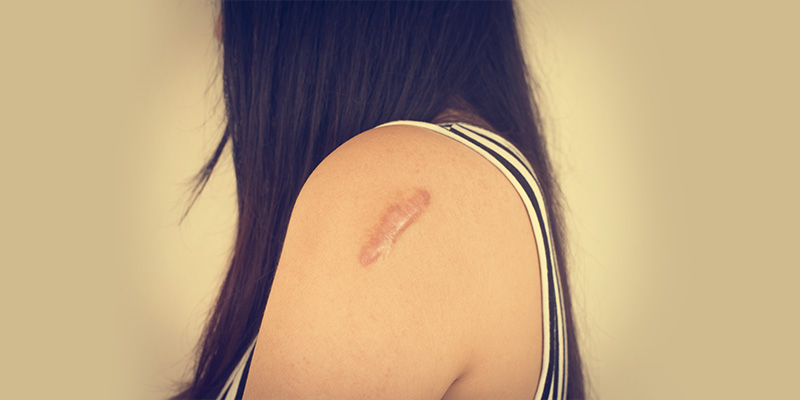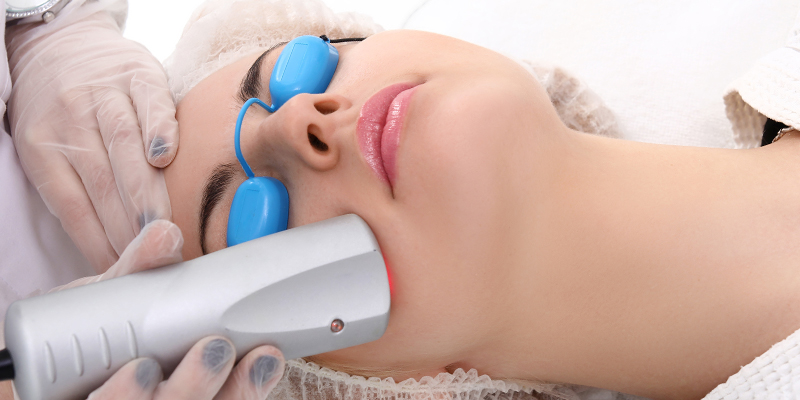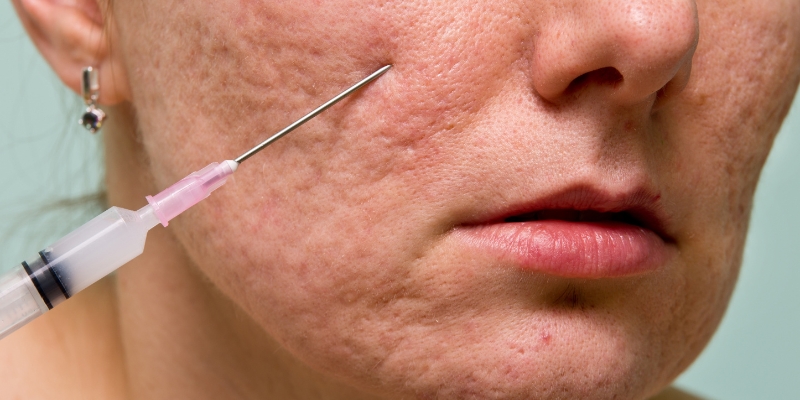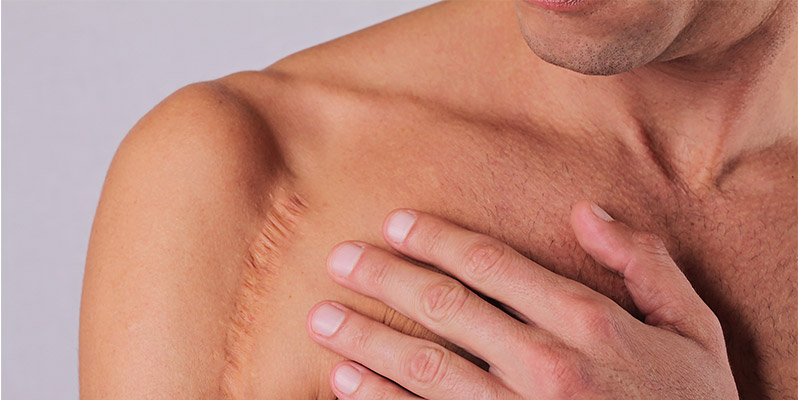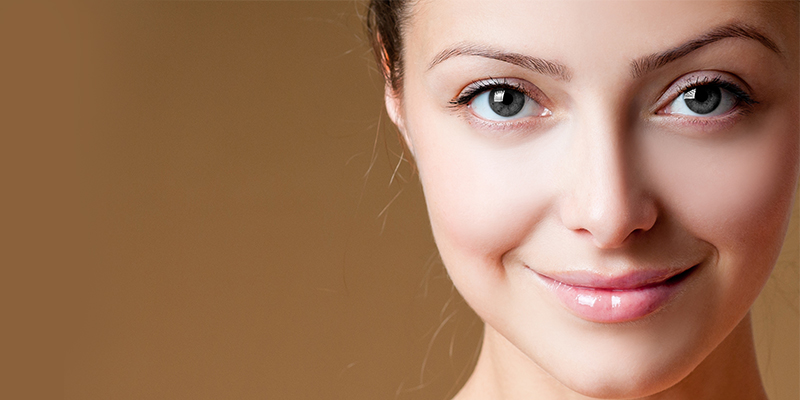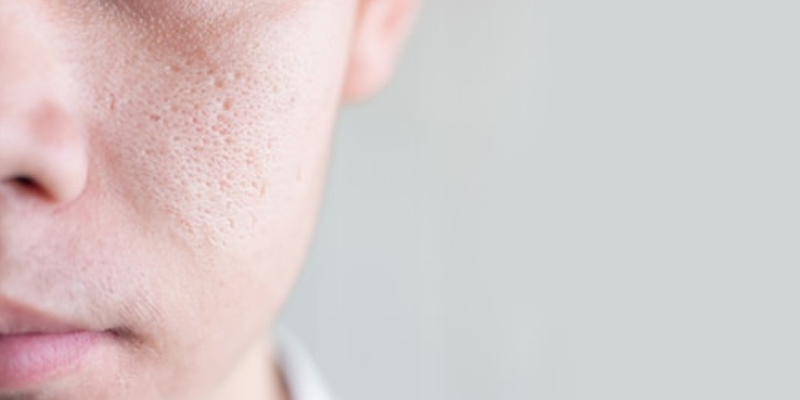How To Get Rid Of Keloid Scars?
Keloids are scars that grow beyond the boundaries of the original site of injury. They cause discomfort, restricted movement, and tightness, mainly when they occur around a joint such as the knee or ankle. Though these raised scars grow excessively, they do not adversely affect health per se, but they could be a cosmetic concern. The good news is that due to medical advances keloid scar management is possible today.
What Are Keloid Scars?
Keloids are an abnormal type of scars that grow beyond the boundary of the wound and become much larger than the original injury. The scar becomes raised, thick and grows excessively during the healing process of the wound. Anything that can cause scarring can lead to keloids in predisposed individuals. This includes burn injuries, severe acne, cuts or surgery. It can also develop after going for a tattoo or body piercing. These can affect any part of the body and take a few weeks to three months to fully develop. Some even continue to grow afterwards. Keloids are the trickiest scars to manage.
Must Read: Effective Treatment To Remove Old Keloid Scars
Why Do People Get Keloids?
It is a result of different kinds of injuries. These include –
- Surgical procedure
- Severe Acne
- Puncture Wounds
- Piercings
- Vaccination
- Chickenpox
- Tattoos
- Insect Bites
- Burns
Spontaneous keloids are those scars that form without an injury preceding them. They also develop due to a genetic propensity. You are more likely to develop keloids if either of your parents had it. Also, people with darker skin tones (primarily individuals of Latin, South Asian, and African descent) are 15 to 20% more likely to develop keloids than others.
How Do You Know If You Have Keloids?
Keloids typically begin as raised scars with flat or round surfaces and are red, pink or purple in colour. The border is often darker than the centre. Overall, it has the following characteristics –
- Abnormal wound healing precedes the slow emergence of a keloid skin that expands over time.
- Raised overgrowth with a flat or round surface.
- Commonly occurs on the neck, shoulder, chest, back, and ears.
- Ranges in texture from soft and doughy, or hard and rubbery to the touch.
- Accompanied by itchy keloid, pain, and tenderness around the wound.
- Scar tissue is reddish or pink.
- Range in size varies from less than an inch to more than 12 inches.
Texture And Feel Of Keloid Scars
A keloid scar has a smooth, flat, and firm surface. The skin may feel sore to touch until it develops fully. The keloid pain usually subsides once it stabilizes. Sometimes, these often disguise as bacterial infections or skin tumours.
Must Read: How To Get Rid Of Deep Chicken Pox Scars?
Keloids Vs Hypertrophic Scars
Here are some of the fundamental differences between the two types of scars:
- Keloids extend beyond the boundary of the injury site whereas a hypertrophic scar is a widened raised scar that stays within the extent of the original wound.
- Unlike keloid formation, hypertrophic scars do not correlate with a racial or genetic predisposition.
- Hypertrophic scars respond well to treatment, while keloids are relatively challenging to eliminate.
Must Watch
Professional Treatments For Keloids Scar Removal
Keloid removal treatment works by shrinking the keloid. Once it flattens and softens, it can be easier to get rid of to an extent. Treatment depends upon the size, extent of involvement, age of the individual and duration of the scar. Usually, doctors prefer using a combination of procedures that include –
- Laser Therapy: It is often considered as the best treatment for keloid scar and other kinds of scarring on the skin due to its non-aggressive approach. A Pulsed dye laser (PDL) beam directed at the scar tissue can help to reduce the redness, size, and appearance of the keloid. Dermatologists often use it in conjunction with steroid injections.
- Steroid Injections: Doctors administer steroid injections such as triamcinolone into the scar. They decide the dosage and amount of injectable needed for scar reduction. These injections show results when administered at regular intervals.
- Fluorouracil Injections: Doctors use this option either as a stand-alone treatment or in combination with the steroid triamcinolone for reduction of keloids. They administer the injections at 3-4 week intervals. Your dermatologist will decide the dosage you need depending on the extent and hardness of the keloid.
- Silicone Gel Dressing: Silicone dressing treatment involves the application of a silicone gel or sheet. The procedure is affordable, and usually, doctors combine it with other methods to attain the best results.
- Cryotherapy: In this treatment option, a dermatologist will apply a liquefied gas, i.e. liquid nitrogen at freezing temperature, to the scar tissues at regular intervals, to shrink them radically. Sometimes the doctor may instil the liquid directly into the scarred tissue as well.
- Surgical Excision: This modality involves the surgical removal of keloids using specialized tools. With the use of this method as a standalone treatment, there may be a high risk of recurrence of scars.
How Much Does Keloid Treatment Cost In India?
The cost of treatment for keloid scar removal is variable depending on the procedure selected. The expected price range might be:
- Laser Therapy: Costs around Rs 7,000 to Rs 20,000 per session.
- Surgical Excision: Comes at a price range between Rs 15,000 to Rs 25,000 per session.
- Scar Removal Creams: The price of a typical scar removal cream is between Rs 700 to Rs 2,000 per unit.
The cost of treatment varies from one person to another depending on the choice of procedure, the size, type and depth of the keloid scar, your skin type and the number of sessions recommended.
The prices mentioned here are indicative only and may vary from one clinic to another based on its location, reputation, the technology available and the experience of the doctor. It is advisable to visit a skin clinic to find out the exact cost of treatment for the removal of keloid scars.
Must Read: How Much Does Fractional Laser Resurfacing Cost?
How To Prevent Keloid Scars?
If you are genetically prone to keloids, it is best to avoid tattoos, piercings, or any surgeries that are not mandatory. Treat any minor injuries right away to prevent its formation.
Our certified subject matter experts do extensive research and collate facts from reputed scientific journals and international studies to create informative and engaging articles related to all your dermatology concerns. They strive to help you decipher medical jargon, distinguish fact from fiction and overcome paranoia. Our qualified medical board or expert panel goes a step further to verify these facts based on their rich academic knowledge, vast clinical experience and critical industry insights to ensure you consume only medically accurate content that empowers you to make informed decisions about your hair and skin-care treatments and weight management. Check out our Editorial policy for further details
https://www.aad.org/public/diseases/bumps-and-growths/keloidshttps://emedicine.medscape.com/article/1298013-overview
https://www.everydayhealth.com/keloids/guide/
https://www.ncbi.nlm.nih.gov/pmc/articles/PMC3639020/
https://medlineplus.gov/ency/article/000849.htm






